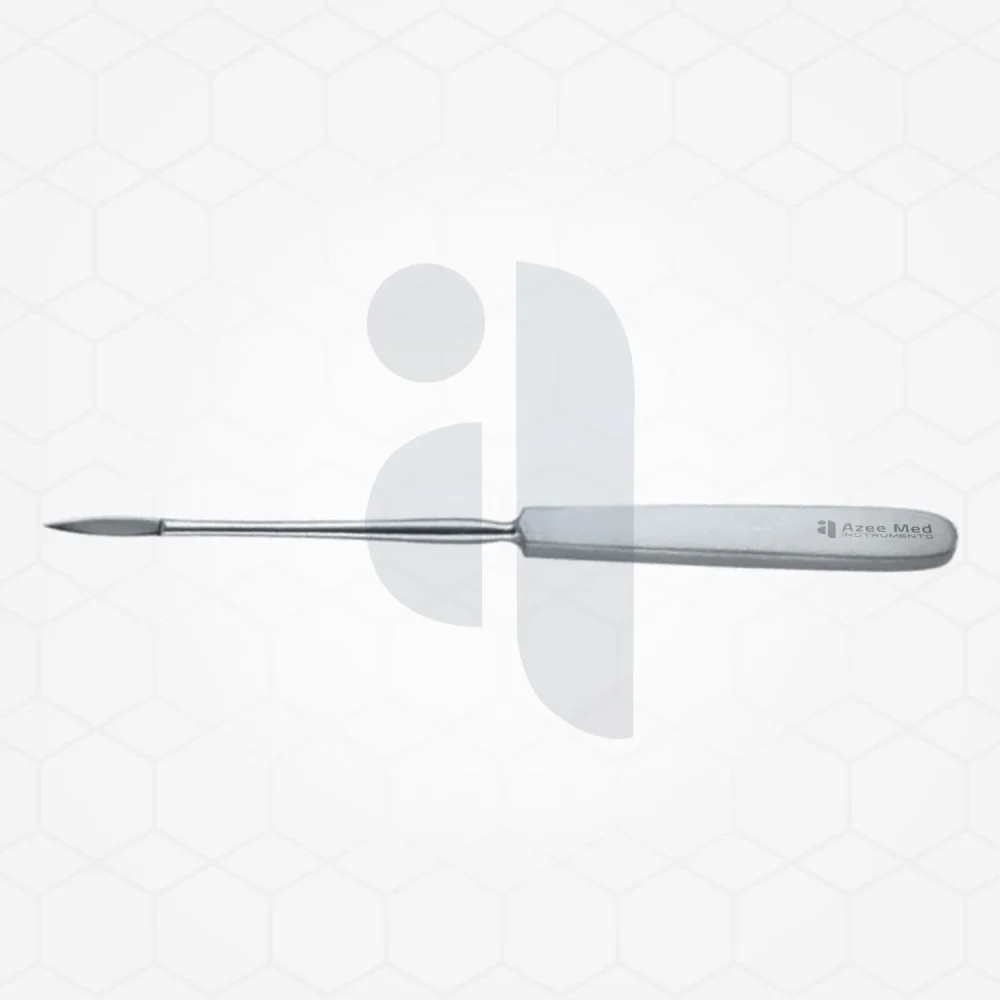The brain knife is a highly specialized surgical instrument used in neurosurgery and pathology for precise cutting of brain tissue. It is designed to provide clean, accurate incisions in delicate structures, minimizing trauma and preserving tissue integrity. Neurosurgeons and pathologists rely on this tool for procedures such as brain dissections, tumor resections, and post-mortem examinations. The brain knife plays a critical role in advancing medical research and improving patient outcomes in neurological surgeries.
Design and Features of the Brain Knife
The brain knife typically has a long, slender, and sharp blade made of high-quality stainless steel. The handle is ergonomically designed to provide a comfortable grip, ensuring stability and control during intricate procedures. The blade length varies depending on the intended use, with longer blades ideal for slicing through large sections of brain tissue and shorter blades providing greater precision in confined areas.
Some brain knives feature a non-serrated edge for making smooth incisions, while others may have a slightly serrated design for enhanced grip on soft tissue. Advanced variations may include disposable or reusable options, with modern versions incorporating non-stick coatings to prevent tissue adhesion during cutting. These features ensure that neurosurgeons and researchers can achieve maximum accuracy with minimal disruption to surrounding structures.
Uses in Neurosurgery
In neurosurgical procedures, the brain knife is employed for delicate dissections and precise excisions of tumors, lesions, or damaged brain tissue. Neurosurgeons require tools that allow them to navigate the complex structure of the brain while preserving essential functions. The brain knife provides the sharpness and control necessary to minimize damage to healthy tissue while targeting specific areas for treatment.
Brain tumor resections often require the use of a brain knife to carefully separate abnormal tissue from surrounding healthy structures. This precision is crucial for reducing complications and improving patient recovery. In procedures such as epilepsy surgery, the brain knife assists in removing small portions of brain tissue responsible for seizures, helping patients regain a better quality of life.
Role in Neuropathology and Research
The brain knife is also widely used in neuropathology and medical research for the examination of brain specimens. During autopsies, pathologists use the brain knife to make precise slices of brain tissue for further analysis. This helps in diagnosing neurological disorders such as Alzheimer’s disease, Parkinson’s disease, and multiple sclerosis.
In research settings, the brain knife is essential for studying brain anatomy and understanding the effects of various conditions on neural structures. It allows scientists to prepare tissue samples for microscopic examination, contributing to advancements in neurology and the development of new treatments.
Advancements in Brain Knife Technology
With the evolution of surgical instruments, modern brain knives have seen improvements in material quality, ergonomic design, and precision cutting. Some newer models incorporate laser-guided cutting technology, enhancing the accuracy of incisions in delicate brain tissue. Other innovations include heat-resistant coatings and antimicrobial properties to reduce infection risks during procedures.
As neurosurgical techniques continue to advance, the development of even more refined brain knives will play a significant role in improving surgical precision and patient safety. Minimally invasive techniques, robotic-assisted surgeries, and specialized cutting tools are shaping the future of neurosurgery, ensuring better outcomes for patients undergoing brain procedures.
Conclusion
The brain knife is an indispensable tool in neurosurgery, pathology, and medical research. Its precise cutting ability allows surgeons and researchers to work with delicate brain tissue while minimizing damage to surrounding areas. As technology advances, the brain knife continues to evolve, enhancing the safety and effectiveness of neurological procedures. With its critical role in both treatment and research, this specialized instrument remains a cornerstone of modern neuroscience and medical innovation.





Comments